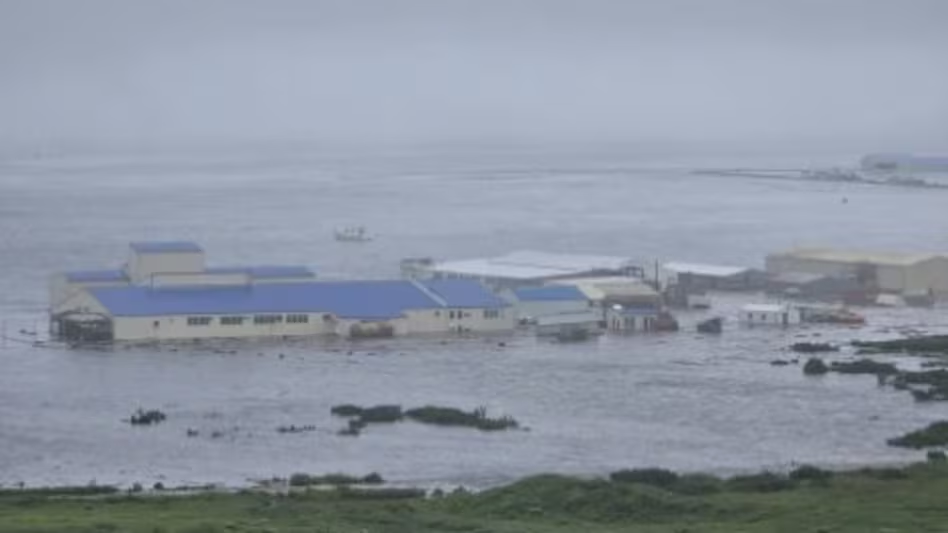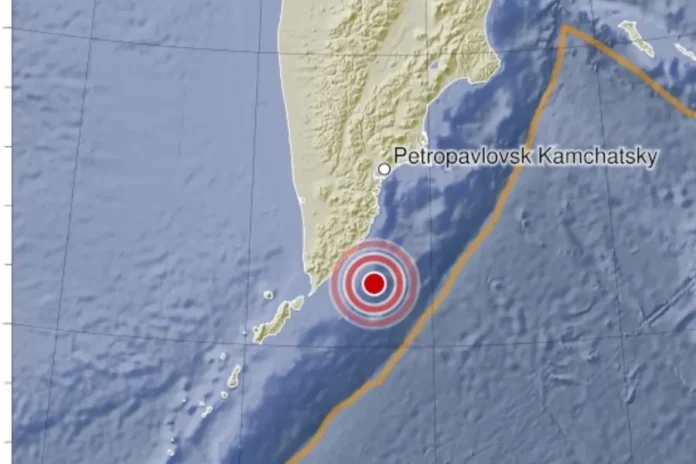A massive earthquake in Russia measuring 8.8 on the Richter scale sent shockwaves through the Pacific on July 29, 2025, triggering widespread tsunami warnings across Japan, Hawaii, Alaska, and parts of South America. While the damage was ultimately limited, the incident has reignited global focus on disaster preparedness, real-time alert systems, and how vulnerable coastal nations, including India, can draw critical lessons from the swift response.

The Earthquake in Russia: How It Unfolded
The earthquake in Russia struck just off the coast of the Kamchatka Peninsula early Tuesday morning. Initially recorded at magnitude 8.0 and later revised to a massive 8.8, the quake originated at a shallow depth of around 12 to 13 milesideal conditions for a potential tsunami. Tremors were strongly felt in towns like Petropavlovsk-Kamchatsky and Severo-Kurilsk, where residents experienced power outages, collapsing infrastructure, and emergency evacuations.
The force of the quake displaced enough seawater to prompt immediate tsunami alerts across the Pacific region. Japan, located directly across the Sea of Okhotsk, issued its first public alert within 12 minutes through its J-Alert system, urging nearly two million people to evacuate from vulnerable coastal zones.
Tsunami Warnings Across the Pacific: Japan, Hawaii, and Beyond
Following the earthquake in Russia, the Pacific Tsunami Warning Center in Hawaii began issuing regional advisories. Japan’s northern island of Hokkaido saw waves as high as one meter. Though minor in height, these waves carried the potential for serious damage and were taken seriously. One individual lost their life in Japan during evacuation efforts underscoring that even successful emergency response carries risk.
In Russia, waves reached up to five meters, especially around Severo-Kurilsk. Footage from the region showed flooded homes, breached seawalls, and cars swept away by strong currents. Despite the dramatic visuals, officials reported no deaths and only minor injuries.
Hawaii, California, and several Pacific island nations also responded by activating tsunami protocols. Coastal zones were evacuated, and in Honolulu, major roads were gridlocked as residents sought higher ground. Cruise ships altered routes or abandoned port calls. However, as the hours passed, waves remained modest, often under one meter and warnings were later downgraded to advisories or lifted altogether.
Chile and Peru evacuated coastal populations as a precaution, with over a million people moved inland in Chile alone. Fortunately, the waves there were limited to less than a meter, sparing both lives and property.

Why the Earthquake in Russia and Pacific Tsunami Alerts Matter to India
India might seem geographically distant from a quake near Russia, but the implications are much closer to home. With over 7,500 kilometers of coastline and a history marked by the devastating 2004 Indian Ocean tsunami, India remains vulnerable to similar threats. The earthquake in Russia and the rapid tsunami response demonstrate the value of real-time alerts, well-rehearsed evacuation plans, and community awareness.
Japan’s highly praised J-Alert system and its disciplined civic response are being closely watched by disaster planners in India. Programs like Bharat-Alert and India’s own early warning systems, including those run by INCOIS (Indian National Centre for Ocean Information Services), are gradually improving, but events like this emphasize the urgent need for better digital reach, faster alerts, and public education.
This is particularly relevant for India’s youth students studying abroad, young professionals living in coastal cities, and a digital-native generation eager to make policy more responsive. The earthquake in Russia is not just a foreign disaster headline but a wake-up call.
What Experts and Authorities Are Saying
According to Professor Ilan Kelman, a disaster risk expert, the real success story is how decades of planning and global cooperation helped prevent a mass-casualty event. “The world learned from past tsunamis, especially the Indian Ocean disaster of 2004,” he said, “but maintaining these systems requires continuous funding and community engagement.”
Dan Snider, from the U.S. Tsunami Warning Center, offered a sobering reminder: “The first tsunami wave is often not the largest. People must remain cautious even after initial waves pass.”
Social media played a key role in spreading real-time updates and visuals. In Japan, videos showed orderly evacuations, emergency announcements on street speakers, and shelters opening within minutes. In Russia, residents shared clips of surging water breaching sea barriers, highlighting how close-knit coastal communities sprang into action.
What This Earthquake and Tsunami Event Means for You
The earthquake in Russia and the Pacific-wide tsunami alerts should not be seen as isolated events. They are part of a global pattern of rising climate sensitivity, tectonic volatility, and interconnected risk. For Indian readers, especially the younger generation, this moment reinforces a few critical truths:
Preparedness saves lives. Real-time alerts aren’t enough unless communities know how to respond. Public drills, school awareness programs, and mobile-based alert apps need broader adoption in India. More importantly, we must shift from a reactive to a preventive disaster culture.
Also Read: 10 Careers That Will Not Survive the Future
The earthquake in Russia and the resulting tsunami alerts remind us that nature gives little warning, but human systems can, and must, rise to meet the moment. This was a global dress rehearsal for the next big one, wherever it may strike. For India and its youth, the message is clear: stay informed, stay alert, and demand the preparedness you deserve. When nature strikes, readiness, not panic, is our best defense.
FAQs
Q1. Was India affected by the earthquake or tsunami?
No. The earthquake in Russia occurred in the northern Pacific and had no direct seismic or tsunami impact on India.
Q2. How serious was the tsunami?
In Russia, waves reached up to five meters; in Japan and other regions, waves stayed under one meter. Warnings were issued as a precaution and later lifted.
Q3. Could this happen in the Indian Ocean?
Yes. India’s eastern coast and the Andaman-Nicobar region lie in seismically active zones. Past tsunamis have proven the risk is real.
Q4. Are aftershocks expected?
Russian authorities have warned of potential aftershocks up to magnitude 7.5 in the coming days.


